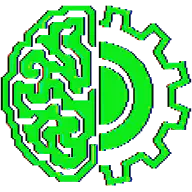SaaS 0xA#
Overview#
This video discusses language not in the conventional sense of spoken words, but as a broader concept encompassing any method of conveying and interpreting signals, frames of reference, and abstractions. The speaker emphasizes language’s role as an interface, particularly the internal language we use to communicate with ourselves, arguing that improving this inner dialogue is fundamental to becoming a better thinker and communicator.
Defining Language as an Interface and Interpretation#
- [00:00:00] The video introduces language as an interface, distinct from computing concepts like processing or storage, focusing on conveying information.
- [00:00:42] Language is defined broadly as any sequence of differentiable signals, including spoken words, sign language, Morse code, tapping patterns, or even blinking lights.
- [00:01:36] Different forms of communication, like images, offer varying densities and parallelism compared to sequential speech.
- [00:01:56] The effort required for creation (writing) and interpretation (reading) varies depending on the communication medium (e.g., images can take more creation effort but offer density for interpretation).
- [00:02:51] The context in which language is evaluated is highlighted as the most crucial aspect of interpretation.
Language as a Driver of Innovation and Abstraction#
- [00:03:29] Language is considered a powerful driver of innovation.
- [00:03:49] The core argument is that naming abstractions is essential for stabilizing foundational concepts upon which higher abstractions can be built (illustrated with examples like Arabic numerals and the concept of a “chair”).
- [00:05:12] Viewers are encouraged to think of language generically as an interface – with oneself, with others, or with groups – rather than limiting it to a specific linguistic system.
Engineering Your Inner Language and Context#
- [00:05:58] Language and context are presented as dynamic, constantly updated processes, especially within a human mind.
- [00:06:36] A key takeaway is to engineer your own context and consequently your interpretation of language, by building a personal vocabulary around how you interpret the world.
- [00:07:23] Controlling interpretation involves bridging the gap between the symbolic/semantic (universal concepts) and the continuous/detailed (personal experience).
- [00:08:07] Language encompasses not just explicit signals but also the full context, including visual cues, presentation, status (e.g., having a beard), and surroundings – everything communicates something, and interpretation is personal.
- [00:08:59] Important skills involve expanding the scope and ease of interpretation and triaging noise vs. signal in complex information or life situations.
Communication With Self: The Most Important Interface#
- [00:11:32] Language is intrinsically tied to thought; thinking occurs through internal interfaces.
- [00:12:13] Inventing personal words or phrases for routines or states (“morning philosophical protocol”) can dense-pack information and facilitate internal processing.
- [00:13:00] The intrinsic interface (communication with yourself) is deemed the most important because your experience of external communication is always filtered through your personal context and bias.
- [00:15:25] The primary goal is not just to communicate better with others, but to get good at language to think better and communicate better with yourself.
- [00:16:02] Actively engineering your inner interface through increased awareness of surroundings and inner dialogue is suggested.
Practical Methods for Developing Language Skills#
- [00:17:46] Reading works by “better thinkers” (like philosophers) is recommended.
- [00:18:17] Writing is highlighted as a particularly powerful tool for thinking better, as it externalizes context, allows revisiting, and helps dissect thoughts.
- [00:19:58] The difference between writing (allowing dissection/overthinking) and natural communication like speech (requiring flow) is noted, suggesting a balance is needed.
- [00:20:27] Video essays are discussed as a medium allowing experimentation with constraints on creation and interpretation time compared to writing.
Conclusion: Mind Your Language for Self-Awareness#
- [00:21:29] Key takeaways include observing different forms of language, being aware of them, naming abstractions to build higher mental constructs, and consciously engaging with your own internal interpretations.
- [00:22:35] The phrase “mind your language” is reinterpreted as becoming more aware of and dissecting your own internal language and interpretation processes.
- [00:23:03] Communicating better with yourself is presented as essential for unbiased, objective self-understanding, which in turn improves communication with others.
